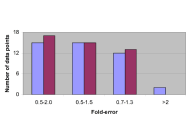134 results in Exploration of Drug Science
Latest
Sort by :
- Latest
- Most Viewed
- Most Downloaded
- Most Cited
Open Access
Letter to the Editor
Further considerations to improve the druggability of biaryl hydroxy-triazole and fluorene-triazole hybrids
Zhiqi Liu ... Zhengwei Huang
Published: November 20, 2025 Explor Drug Sci. 2025;3:1008134
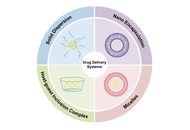
Open Access
Review
Synergism of phages and antimicrobial peptides for treating multidrug resistant bacterial pathogens
Sehrish Nayab ... Muhammad Aamir Aslam
Published: November 12, 2025 Explor Drug Sci. 2025;3:1008133

Open Access
Perspective
Resmetirom and semaglutide in metabolic dysfunction-associated steatohepatitis (MASH): a comparative perspective
Ralf Weiskirchen
Published: October 30, 2025 Explor Drug Sci. 2025;3:1008132
This article belongs to the special issue Innovative Therapeutics in Hepato-Gastroenterology
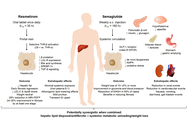
Open Access
Review
Cedarwood essential oil (Cedrus spp.): a forgotten pharmacological resource with emerging therapeutic potential
Sara Diogo Gonçalves
Published: October 16, 2025 Explor Drug Sci. 2025;3:1008131
This article belongs to the special issue Essential Oils: Insights into Pharmacology, In Vivo, In Vitro and In Silico Studies
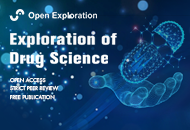
Open Access
Correction
Correction: Folic acid conjugated with serum albumin for nano- and submicron delivery systems for applications in therapy and diagnostics
Maria G. Gorobets ... Anna V. Bychkova
Published: September 24, 2025 Explor Drug Sci. 2025;3:1008130

Open Access
Review
Mechanisms of action and health benefits of probiotics: a comprehensive review
Seemi Tasnim Alam ... Md. Aftab Uddin
Published: September 17, 2025 Explor Drug Sci. 2025;3:1008129
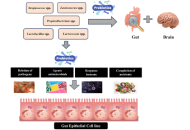
Open Access
Review
Tirzepatide in metabolic dysfunction-associated steatotic liver disease and steatohepatitis: a novel star on the horizon?
Amedeo Lonardo, Ralf Weiskirchen
Published: September 04, 2025 Explor Drug Sci. 2025;3:1008128
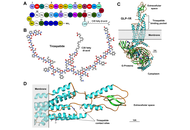
Open Access
Original Article
Effects of Khaya anthotheca against behavioral disorders and oxidative stress induced by repeated variable stress
Franklin Gamo Zemo ... Dieudonne Njamen
Published: September 03, 2025 Explor Drug Sci. 2025;3:1008127
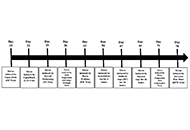
Open Access
Review
Challenges in drug delivery to the tumors—nanoparticles in medicine
Dorota Bartusik-Aebisher ... David Aebisher
Published: August 19, 2025 Explor Drug Sci. 2025;3:1008126
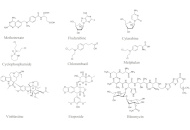
Open Access
Review
Role of brain cholecystokinin in neuronal homeostasis: rediscovering novel functions of an old neuropeptide
Santiago J. Ballaz
Published: August 18, 2025 Explor Drug Sci. 2025;3:1008125
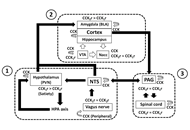
Open Access
Review
Shaping the healthcare of tomorrow: gene-based medicine as a transformative frontier
Ralf Weiskirchen
Published: August 11, 2025 Explor Drug Sci. 2025;3:1008124
This article belongs to the special issue Advances and Innovations in Gene-Based Medicine
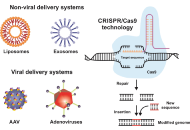
Open Access
Original Article
Canna indica silver nanoparticles (AgNPs): a green alternative for medicine
Mathivathani Kandiah ... Ominda Perera
Published: August 05, 2025 Explor Drug Sci. 2025;3:1008123
This article belongs to the special issue Greening Drug Manufacturing for a Sustainable Healthcare
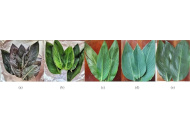
Open Access
Original Article
From rural practice to scientific evidence: synergistic antiplasmodial and antioxidant properties of combined Ageratum conyzoides and Bidens pilosa extracts
Patrick Valere Tsouh Fokou ... Fabrice Fekam Boyom
Published: July 28, 2025 Explor Drug Sci. 2025;3:1008122
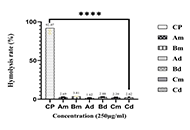
Open Access
Original Article
Study on bioactivities of Morinda citrifolia L. fruit hydroalcoholic extracts and detection of novel phytoconstituents by UPLC-Q-exactive orbitrap-tandem mass spectrum analysis
Aslee Tailulu ... Ping Shi
Published: July 24, 2025 Explor Drug Sci. 2025;3:1008121
This article belongs to the special issue Medicinal Plants and Their Pharmacological Properties
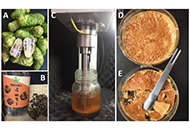
Open Access
Original Article
A gas chromatographic and spectrophotometric-based assessment of an oral preparation from a traditional exhilarating formulation; linking Persian medicine to the modern phytopharmaceuticals
Ali Sahragard ... Mohammad M. Zarshenas
Published: July 22, 2025 Explor Drug Sci. 2025;3:1008120
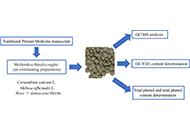
Open Access
Mini Review
The dual role of nuclear factor erythroid 2-related factor 2 in hepatocellular carcinoma: mechanisms, clinical relevance, and therapeutic opportunities
Houhong Wang, Shang Bian
Published: July 22, 2025 Explor Drug Sci. 2025;3:1008119
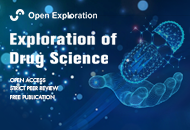
Open Access
Review
Prominent events in the development of a simultaneous multidiagnostic system with synthetic peptides
Oscar Noya ... Sandra Losada
Published: July 17, 2025 Explor Drug Sci. 2025;3:1008118
This article belongs to the special issue Bioactive Peptides discovery and development
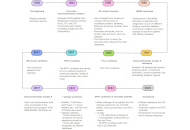
Open Access
Review
Inflammatory bowel disease in Africa: the current landscape of pharmacological treatments and the promise of emerging innovations
Murtada A. Oshi
Published: July 10, 2025 Explor Drug Sci. 2025;3:1008117
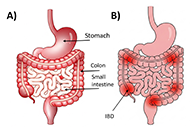
Open Access
Review
Experimental and clinical tests of FDA-approved kinase inhibitors for the treatment of neurological disorders (update 2024)
Hassan Aliashrafzadeh ... Da Zhi Liu
Published: July 01, 2025 Explor Drug Sci. 2025;3:1008116
This article belongs to the special issue Leveraging the FDA-Approved Kinase Inhibitors to Treat Neurological Disorders
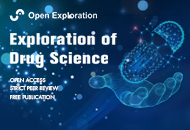
Open Access
Original Article
A simple quantitative model for the prediction of exposure of renally excreted drugs in pregnant women: a comparison with whole body PBPK model
Iftekhar Mahmood
Published: July 01, 2025 Explor Drug Sci. 2025;3:1008115
